
Septic System Service Emergency Septic Repair Septic Medic
Septic tanks are made from concrete or heavyweight plastic and typically have a capacity of 1000 to 2000 gallons. There are two chambers in the tank, separated by a partial wall. Waste flows from the house into the larger chamber. Solids settle to the bottom, and liquids make their way over the partial wall into the smaller second chamber.

Septic Tank Diagram Stock Photo Download Image Now iStock
1. All waste flows to the septic tank. 2. Watery waste, called "effluent," fills most of the tank. Anaerobic bacteria begin breaking down the organic material in the effluent. 3. A layer of.

Septic Tank Size Requirements And All Details You Want To Know It
The tank itself will be a large part of the septic systems diagram because it's the treatment tank for your waste. Usually a cylinder or square in design Inside of the tank, there will be several different kinds of waste. Scum sits on the top and usually consists of soap, oils, etc. Liquid sits in the middle; this is going to be wastewater.
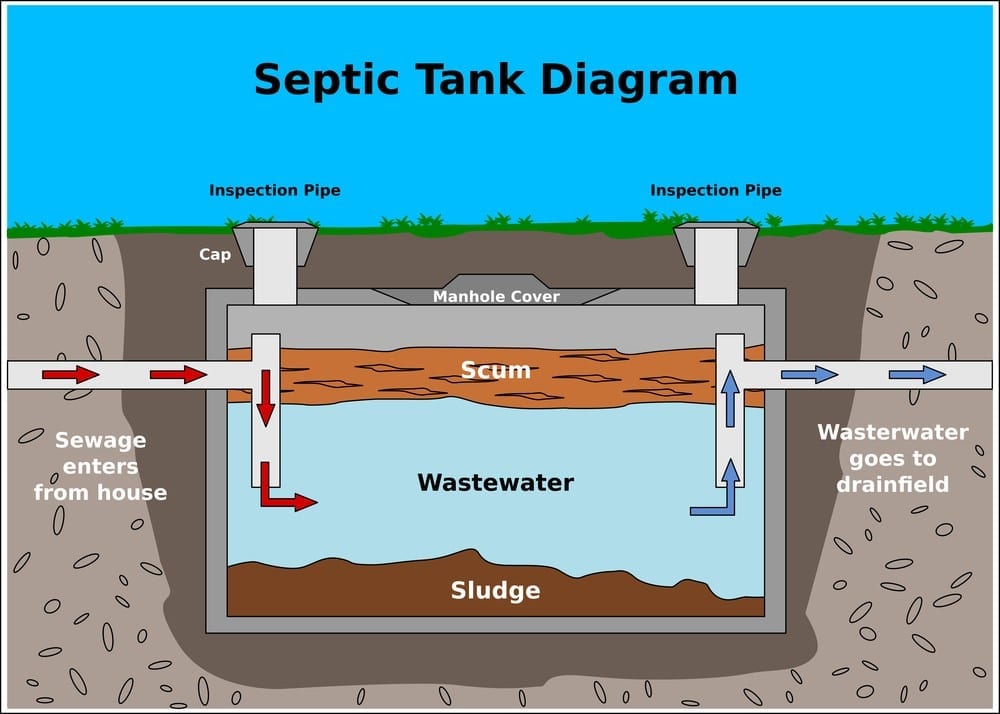
How Septic Systems Work! AFC Home Club
The septic tank diagram above shows the proper operating level of a septic tank. As you can see, the proper liquid level is at the bottom of the outlet line. Therefore, every time more wastewater is added to the tank, an equal amount of effluent will leave the tank and flow to the drain field. If your tank's liquid level is below the outlet.
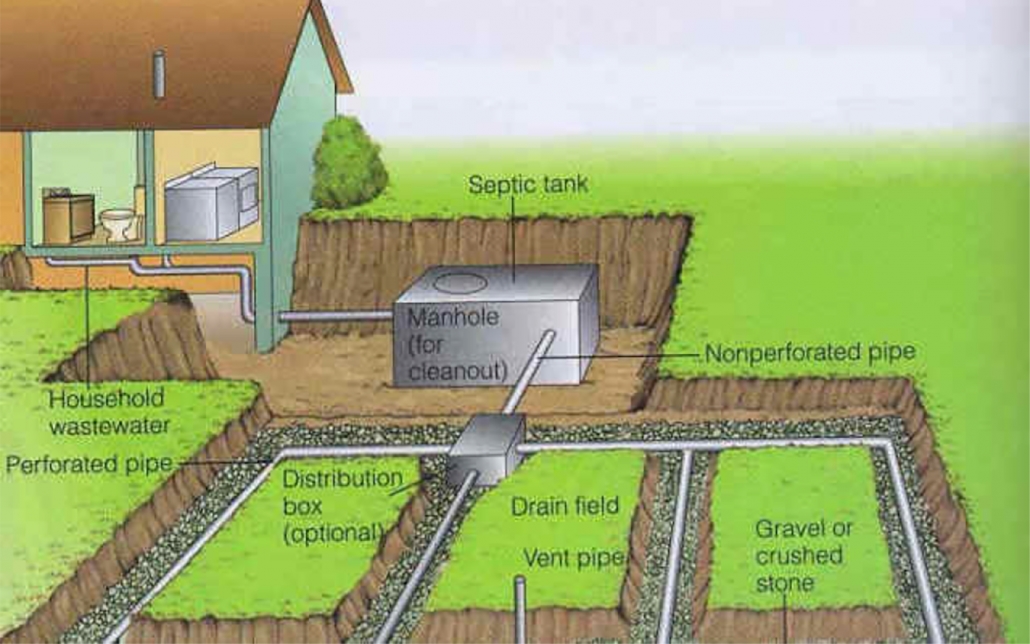
SEPTIC TANKS HOW THEY WORK Buckland Newton Hire
Septic tanks work by allowing waste to separate into three layers: solids, effluent and scum. The solids settle to the bottom, where microorganisms decompose them. The scum, composed of waste that's lighter than water, floats on top. The middle layer of effluent exits the tank and travels through underground perforated pipes into the drainage.
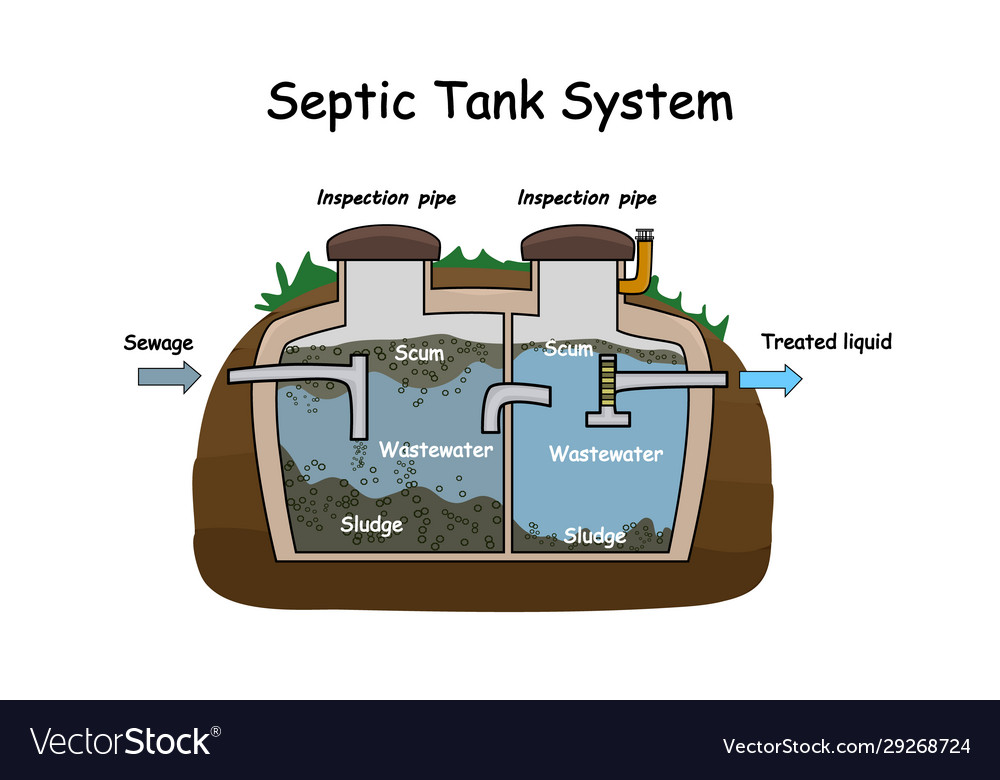
How Septic Tank Works
Septic Tank Diagrams. Diagrams help visualize the internal septic tank layout: Fig. 1 - Diagram of inside a typical septic tank. Fig. 2 - Diagram of overall septic system layout. Key Takeaways. Buried septic tanks cannot be observed but access points protruding from the ground provide external clues.
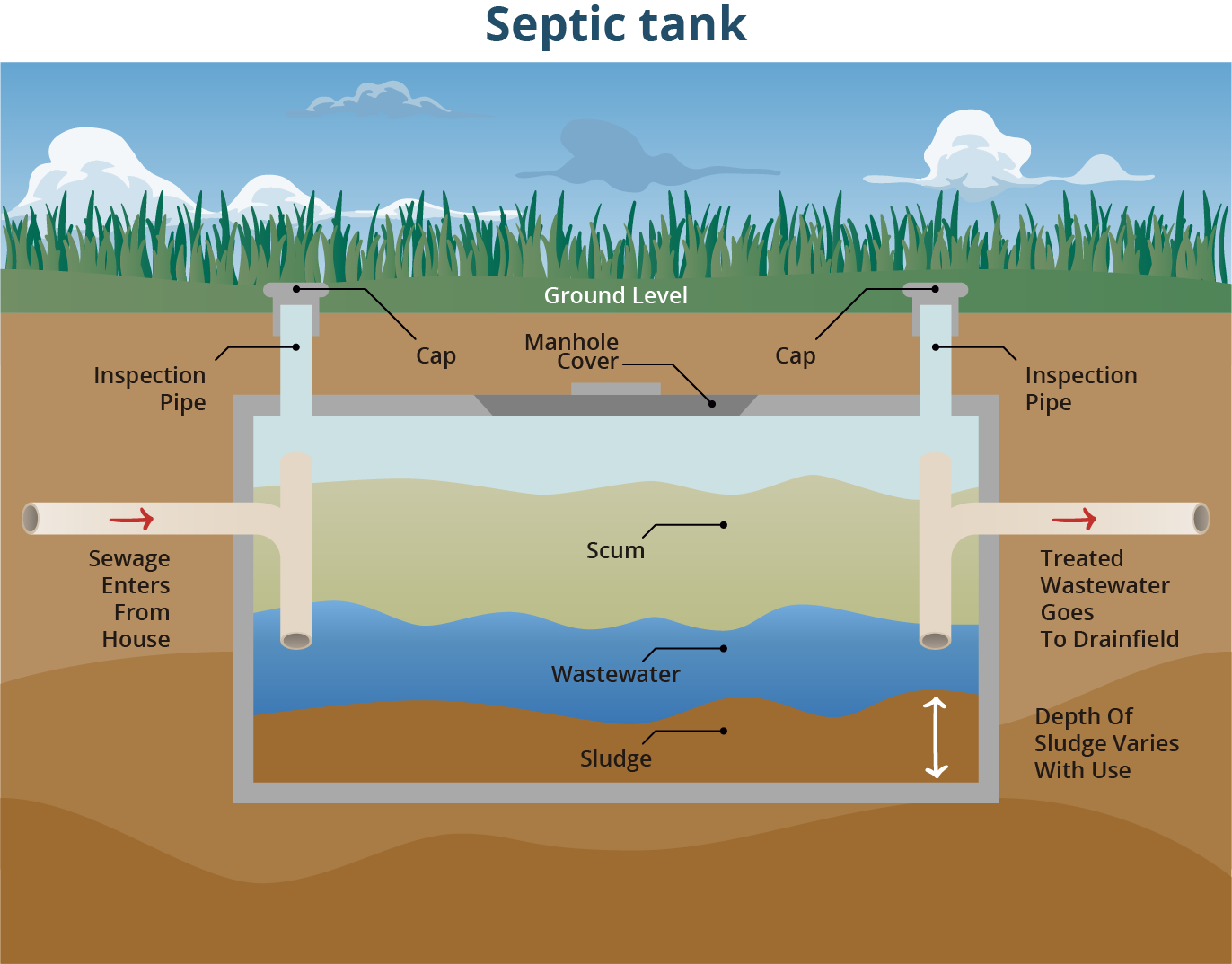
Water Quality Restoration Plans also Focus on Septic Systems
A septic tank is a buried, watertight tank designated and constructed to receive and partially treat raw domestic sanitary wastewater. Heavy solids settle to the bottom of the tank while greases and lighter solids float to the top. The solids stay in the tank while the wastewater is discharged to the drainfield for further treatment and dispersal.
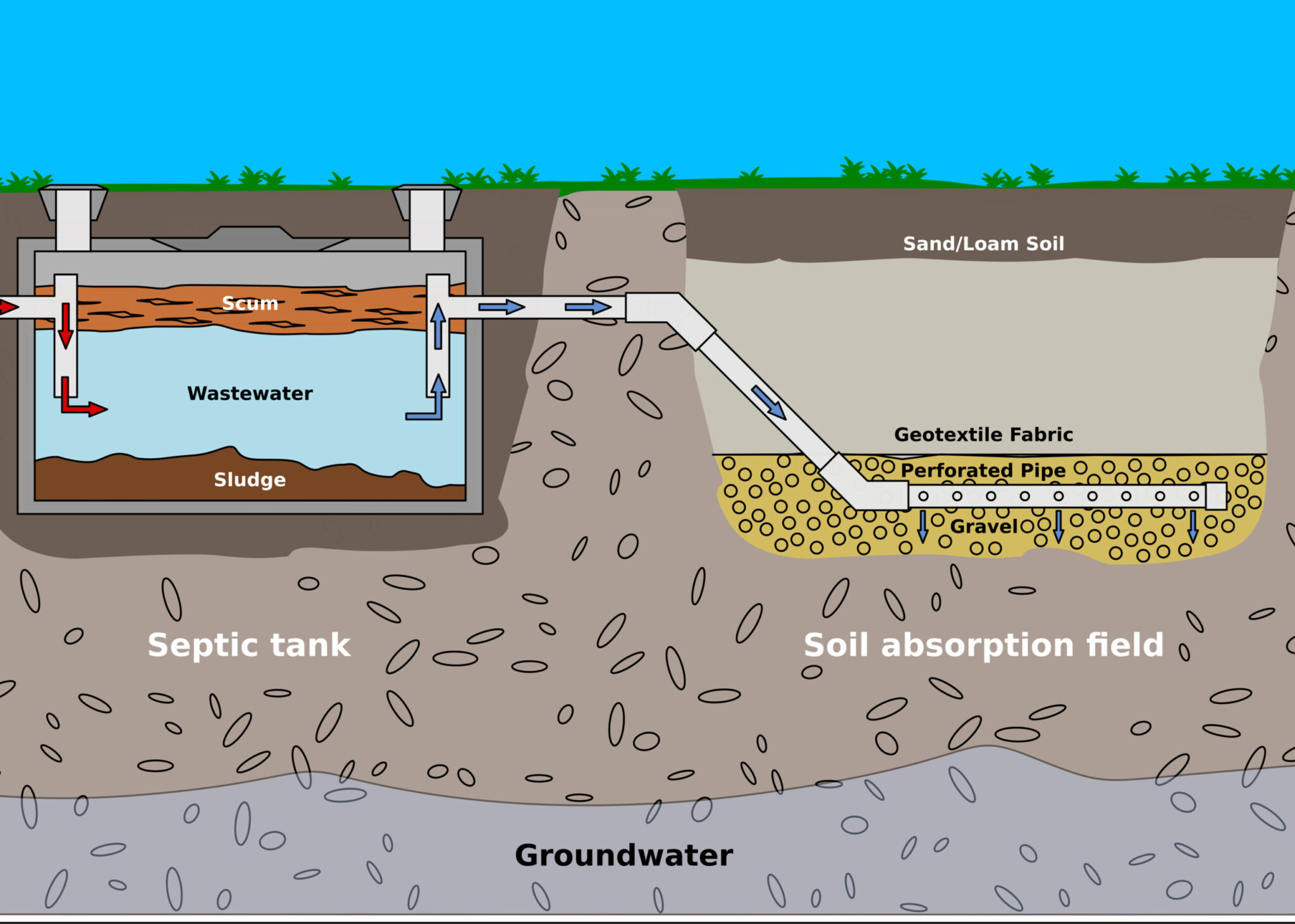
How Does My Septic System Work? Peak Sewer
1. Install a pump chamber after the septic tank. The pump chamber or sometimes known as a pressure tank, or dosing tank contains the electric pump which is utilized to move the effluent from place to place, and eventually into the drain field for final disposal. [5] Set up the pump chamber as you would the septic tank.
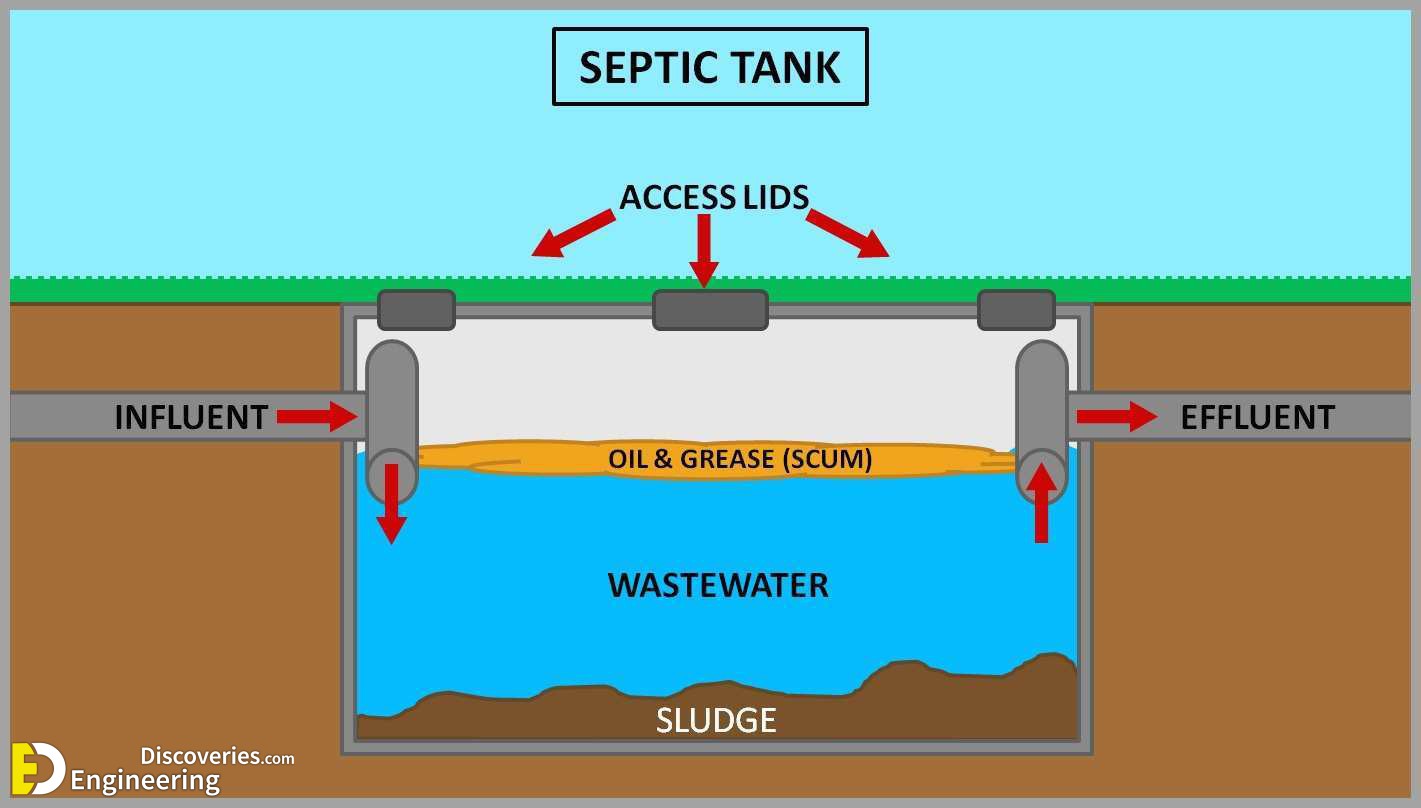
Septic Tank Components And Design Of Septic Tank Based On Number Of
About Press Copyright Contact us Creators Advertise Developers Terms Privacy Policy & Safety How YouTube works Test new features NFL Sunday Ticket Press Copyright.

Septic System Information Lake County Conservation District
The diagram provides a detailed illustration of how wastewater flows from the septic tank into the drain field, where it is then filtered and treated by the soil.. Benefits of Understanding a Septic System Drain Field Diagram. A septic system drain field diagram is a visual representation of the layout and components of a septic system's.
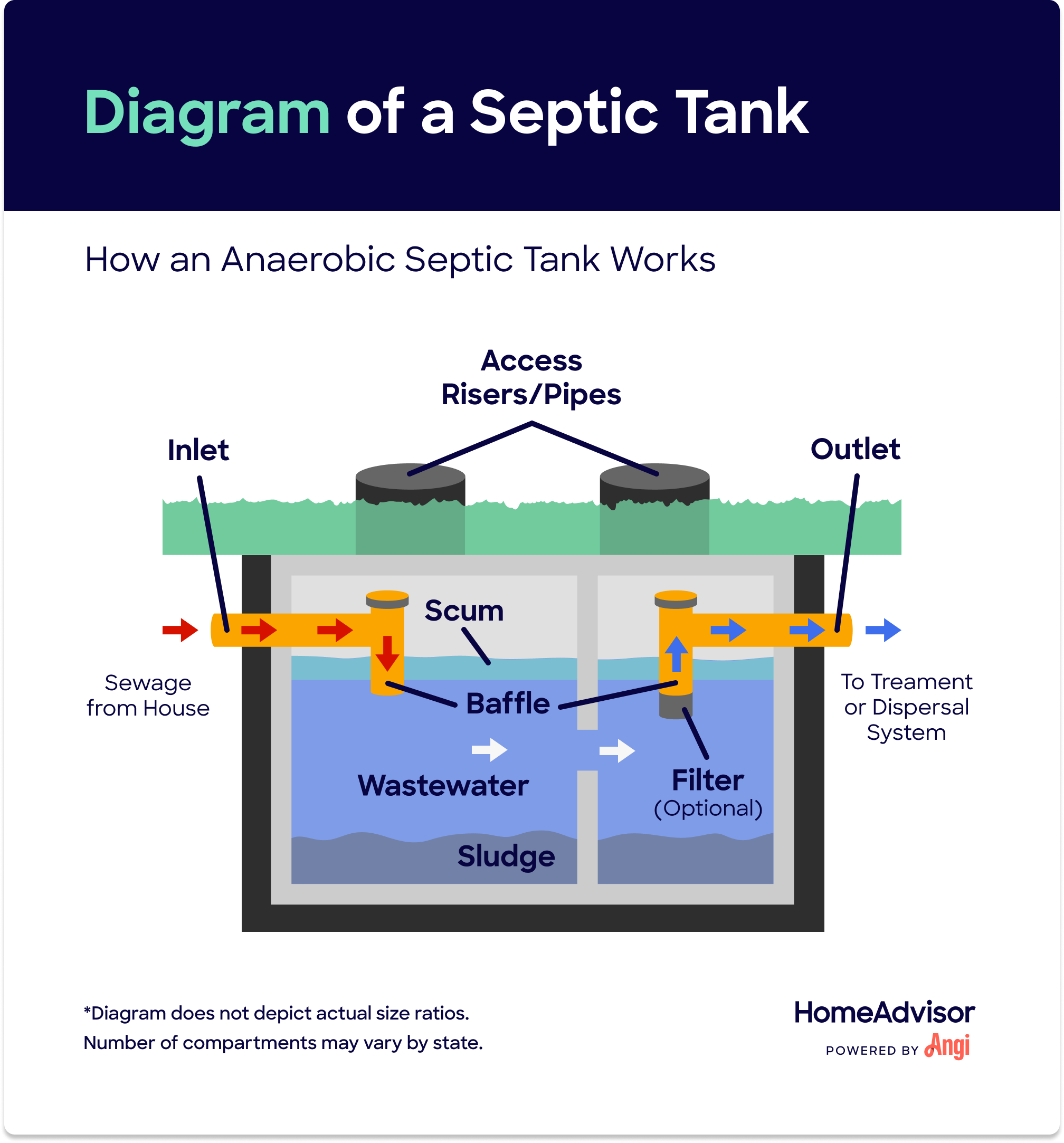
How Septic Tank Works
Below is a simple diagram of a multi-chamber septic tank. Illustration 5. Multi-chamber septic tank. Call Septic Service Pros 1.855-925-0760 For Service or Request a Quote How Do you maintain a septic system to ensure it runs correctly? Septic tanks need to be subjected to regular pumping to empty them of all the sludge and scum that have.

Septic Tank System Diagram Septic tank systems, Septic tank, Septic
The septic tank is a buried, water-tight container usually made of concrete, fiberglass, or polyethylene. Its job is to hold the wastewater long enough to allow solids to settle down to the bottom forming sludge, while the oil and grease floats to the top as scum. Compartments and a T-shaped outlet prevent the sludge and scum from leaving the.
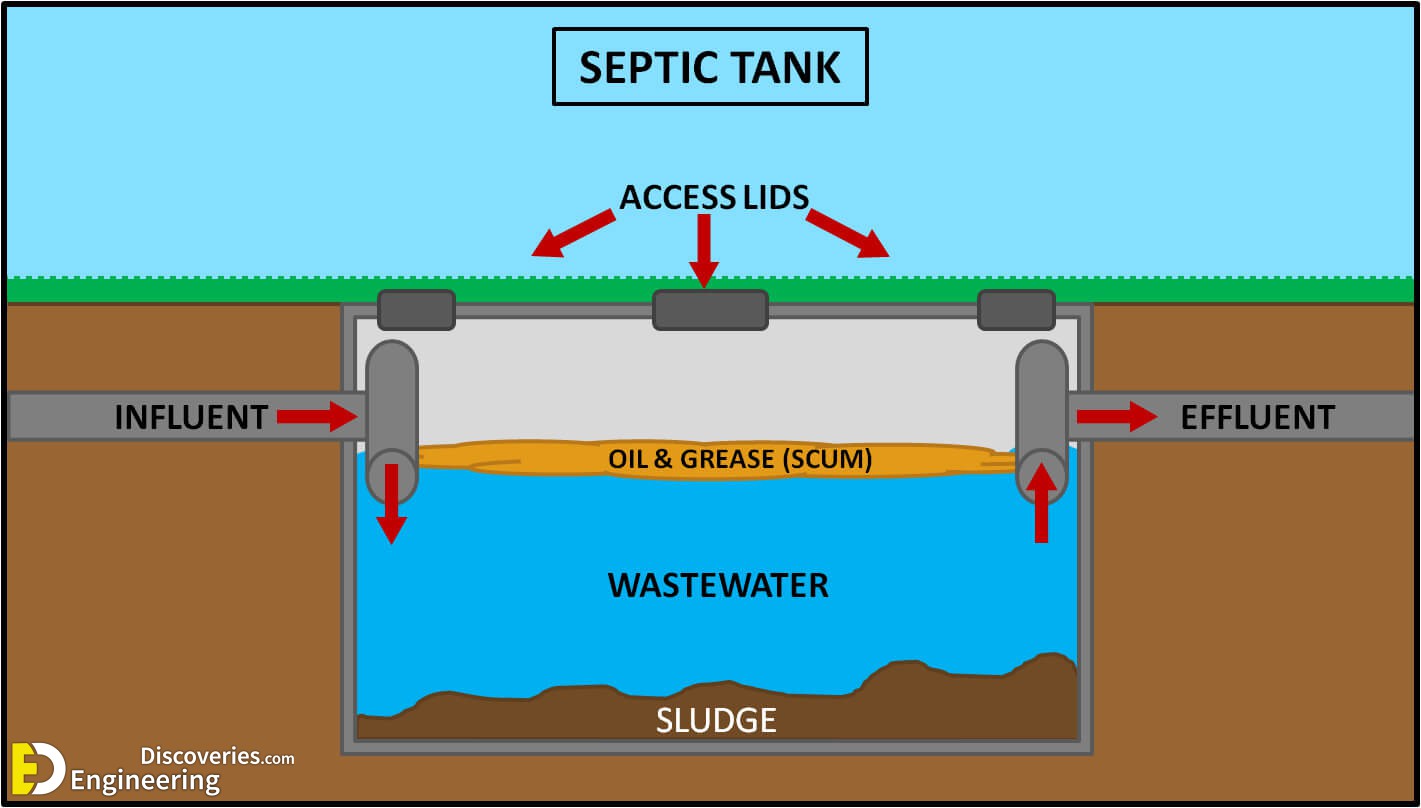
Septic Tank Size Requirements And All Details You Want To Know It
The most common sizes are 1,000 and 1,500-gallon septic tanks. On average, septic tanks are 4.5 feet wide, 8 feet long, and 6 feet tall. The number of bedrooms and number of people in your home will determine the dimensions of the septic tank you need. 1,000-gallon septic tanks are 8 feet 2 inches long, 5 feet 8 inches wide, and 5 feet 1 inch.
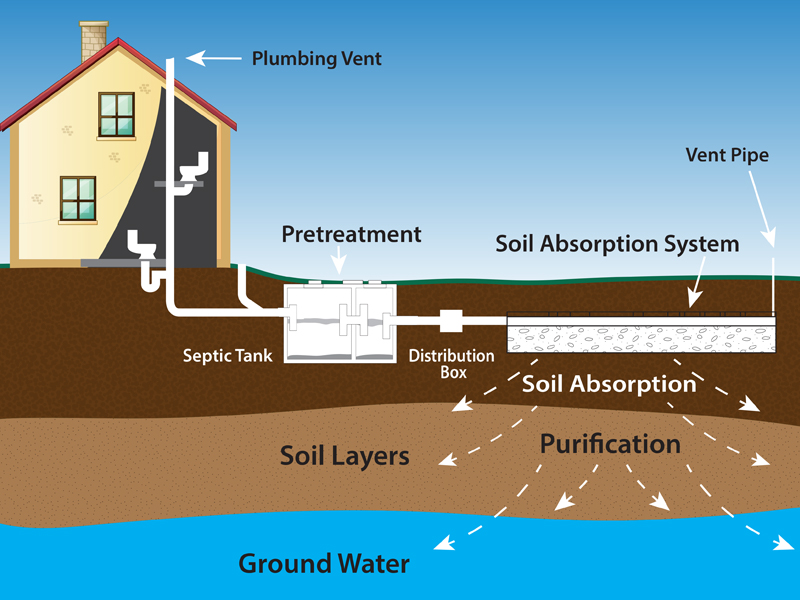
How To Plumb A Septic Tank Diagram General Wiring Diagram
A septic tank diagram is a useful tool for understanding how a septic system works. The main components include the tank, where wastewater and solids separate, and the drain field pipes, where the clarified water is released into the soil. The septic filter prevents solids from leaving the tank and clogging the drain field pipes, which can.

Septic tank diagram Royalty Free Vector Image VectorStock
How a Septic System Works. Figure 1. A typical septic system. The septic system consists of three components (Figure 1): the tank, the drain lines or discharge lines, and the soil treatment area (sometimes called a drainfield or leach field). Tank sizes vary depending on the size of the building.
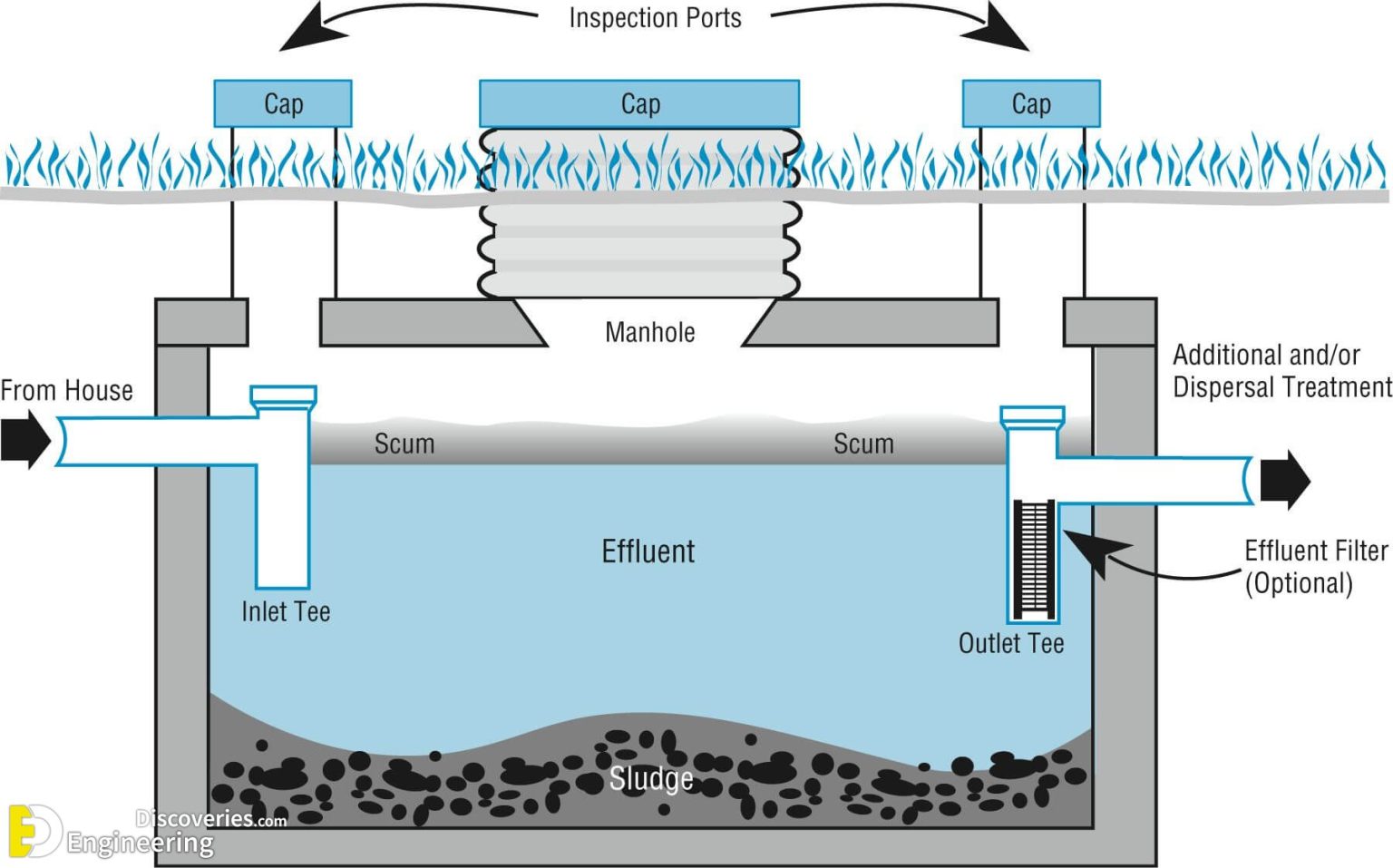
Septic Tank Size Requirements Engineering Discoveries
To avoid damage to the leach field: Do not drive, park, or store heavy equipment over the leach field (or septic tank) Do not place a deck, patio, pool, or any type of structure over the leach field. Keep trees and plantings with deep roots away from the leach field. Grass is the best groundcover.